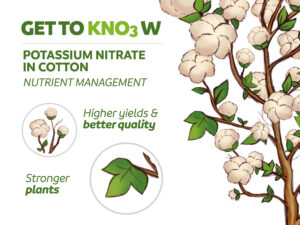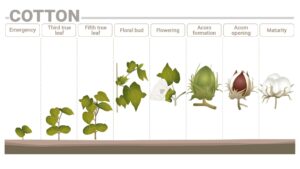The yield response in cotton to foliar K was obtained in three experiments which included various K sources, pH buffering of the K solution, and the addition of boron to the soil or the foliar K sprays. Out of the four K sources tested, KNO3 gave the greatest yield increase with 13% compared to the control, while other K sources showed yield increases of 8 to 9% with four applications of 4,1 kg K/ha.
All boron treatments improved lint yield, but best result was found for the foliar applied B plus K application (Table 1). Foliar B and K-nitrate were applied in 93,5 liter of water/hectare at early flower or 2 weeks after, and repeated at 9-14 day interval between the four applications.
Table 1. Effect of boron applied to the soil and via foliar (average of 3 years) on the lint yield in cotton.



